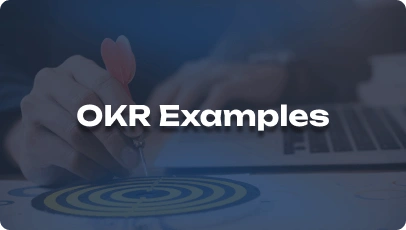Enterprise Engineers play a crucial role in the IT/Engineering industry by designing, implementing, and maintaining complex IT systems that support the operations of large organizations. Mastering Enterprise Engineering is essential for ensuring scalability, security, and efficiency in modern IT infrastructures. As technology continues to evolve rapidly, Enterprise Engineers must stay abreast of the latest trends and tools to address the challenges of digital transformation and data management.
1. What are the key responsibilities of an Enterprise Engineer?
An Enterprise Engineer is responsible for designing, implementing, and managing large-scale IT infrastructure, ensuring its reliability, scalability, and security.
2. How do you approach the design and implementation of enterprise-level IT systems?
I start by conducting a thorough needs analysis, followed by creating a detailed design plan that aligns with the organization’s goals and requirements.
3. What are the common tools and technologies you use as an Enterprise Engineer?
I often work with tools like Docker, Kubernetes, Ansible, and monitoring solutions like Nagios to automate tasks and ensure system performance.
4. How do you ensure the security of enterprise systems you manage?
I implement robust security protocols, regularly update software patches, conduct vulnerability assessments, and monitor network traffic for potential threats.
5. Can you explain the importance of scalability in enterprise IT systems?
Scalability is crucial for accommodating growth and increased demand without compromising performance. It allows systems to handle a higher workload efficiently.
6. How do you stay updated with the latest trends and technologies in Enterprise Engineering?
I regularly attend industry conferences, participate in online forums, and take relevant courses to stay informed about emerging technologies and best practices.
7. What challenges do you commonly face when working on enterprise-level projects?
Common challenges include ensuring seamless integration of legacy systems, managing complex data migrations, and balancing performance with cost-effectiveness.
8. How do you approach troubleshooting and resolving issues in enterprise IT environments?
I follow a systematic approach, starting with identifying the root cause of the problem, isolating the issue, and implementing a solution while minimizing downtime.
9. How do you collaborate with other teams, such as developers and operations, in an enterprise setting?
I maintain open communication channels, participate in cross-functional meetings, and align project goals to ensure smooth collaboration between teams.
10. Can you discuss a successful project where you implemented innovative solutions as an Enterprise Engineer?
I led a project where we adopted a microservices architecture, which significantly improved system performance and flexibility, leading to positive business outcomes.
11. How do you prioritize tasks and manage time effectively when working on multiple projects simultaneously?
I use project management tools like JIRA, set clear priorities based on deadlines and impact, and communicate proactively with stakeholders to ensure alignment.
12. How do you ensure compliance with regulatory requirements when designing enterprise systems?
I stay informed about relevant regulations such as GDPR or HIPAA, conduct regular audits, and implement security measures to ensure compliance at all times.
13. What strategies do you use to optimize the performance of enterprise applications and systems?
I conduct performance testing, identify bottlenecks, optimize configurations, and leverage caching mechanisms to enhance system performance.
14. How do you approach disaster recovery planning and ensuring business continuity in enterprise environments?
I develop comprehensive disaster recovery plans, conduct regular backups, test recovery procedures, and establish failover mechanisms to minimize downtime in case of disruptions.
15. How do you assess the ROI of IT investments in enterprise projects?
I track key performance indicators, analyze cost savings, productivity gains, and alignment with business objectives to evaluate the return on investment of IT initiatives.
16. Can you discuss a time when you had to lead a team through a major system upgrade or migration project?
I led a team through a seamless migration to a cloud-based infrastructure, ensuring minimal disruption to operations and maximizing system performance post-migration.
17. How do you approach capacity planning for enterprise systems to accommodate future growth?
I analyze historical data, forecast growth trends, and collaborate with stakeholders to develop a scalable infrastructure that can meet future demands.
18. How do you ensure documentation and knowledge transfer within the organization for systems you manage?
I maintain detailed documentation, conduct training sessions, and encourage team members to share knowledge to ensure continuity in system management.
19. What role does automation play in your approach to managing enterprise systems?
Automation plays a significant role in streamlining repetitive tasks, ensuring consistency, and reducing human errors in system management processes.
20. How do you handle conflicts or disagreements with stakeholders during project implementations?
I prioritize active listening, seek common ground, and focus on finding solutions that align with project objectives while maintaining positive relationships with stakeholders.
21. Can you discuss a time when you had to quickly adapt to changes in project requirements or priorities?
I adjusted project plans, reallocated resources, and communicated effectively with stakeholders to ensure successful outcomes despite changing circumstances.
22. How do you approach vendor management and evaluating third-party solutions for enterprise projects?
I conduct thorough vendor assessments, negotiate contracts, establish service-level agreements, and monitor vendor performance to ensure quality and cost-effectiveness.
23. How do you address performance bottlenecks in enterprise systems and applications?
I use performance monitoring tools, analyze metrics, conduct load testing, and optimize configurations to identify and address bottlenecks affecting system performance.
24. What steps do you take to ensure data integrity and security in enterprise databases?
I implement encryption measures, access controls, regular backups, and data validation processes to maintain data integrity and protect sensitive information from security threats.
25. How do you approach the integration of new technologies into existing enterprise systems?
I conduct thorough compatibility assessments, pilot tests, and create migration plans to ensure smooth integration of new technologies with minimal disruption to existing systems.
26. How do you stay current with evolving best practices in Enterprise Engineering and IT architecture?
I regularly engage in professional development activities, follow industry publications, and participate in peer discussions to stay informed about emerging trends and practices.
27. Can you discuss a challenging situation you encountered while managing a critical incident in an enterprise environment?
I faced a major outage due to a hardware failure, but by leveraging redundancy measures and rapid response protocols, we were able to restore services swiftly with minimal impact on operations.
28. How do you ensure high availability and reliability of enterprise systems to meet business demands?
I implement redundancy measures, load balancing, disaster recovery plans, and proactive monitoring to ensure high availability and reliability of critical enterprise systems.
29. What strategies do you employ to address performance issues in cloud-based enterprise solutions?
I optimize cloud configurations, leverage auto-scaling capabilities, monitor resource utilization, and use cloud-native tools to address performance issues and ensure optimal system performance.
30. How do you approach continuous improvement and innovation in enterprise IT solutions?
I encourage a culture of innovation, conduct regular reviews of processes, gather feedback from stakeholders, and prioritize continuous learning to drive improvement and innovation in enterprise IT solutions.






